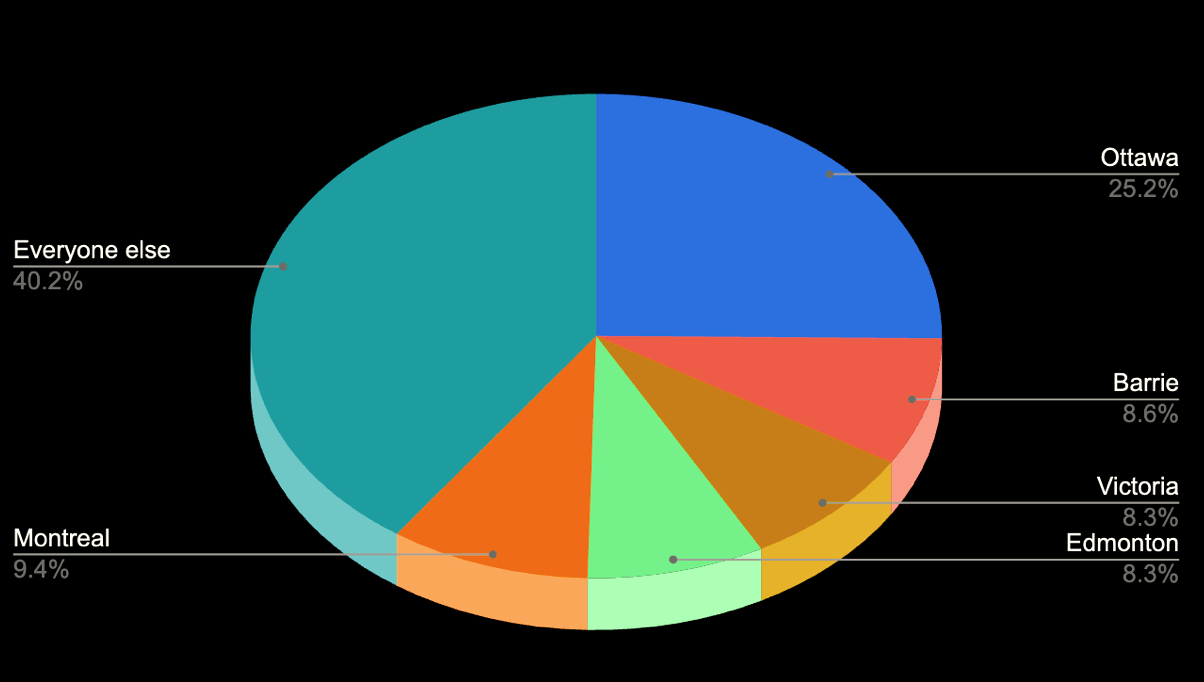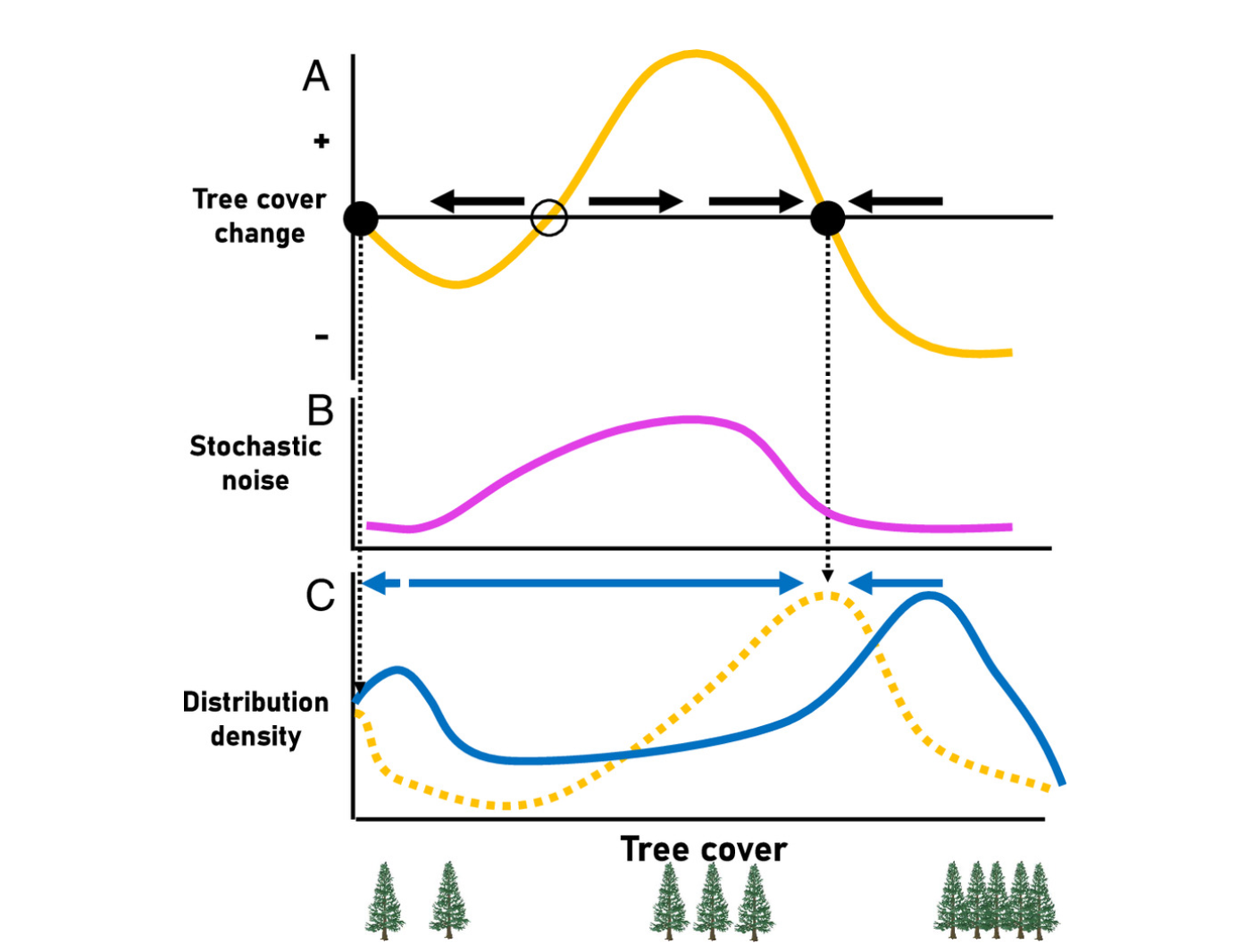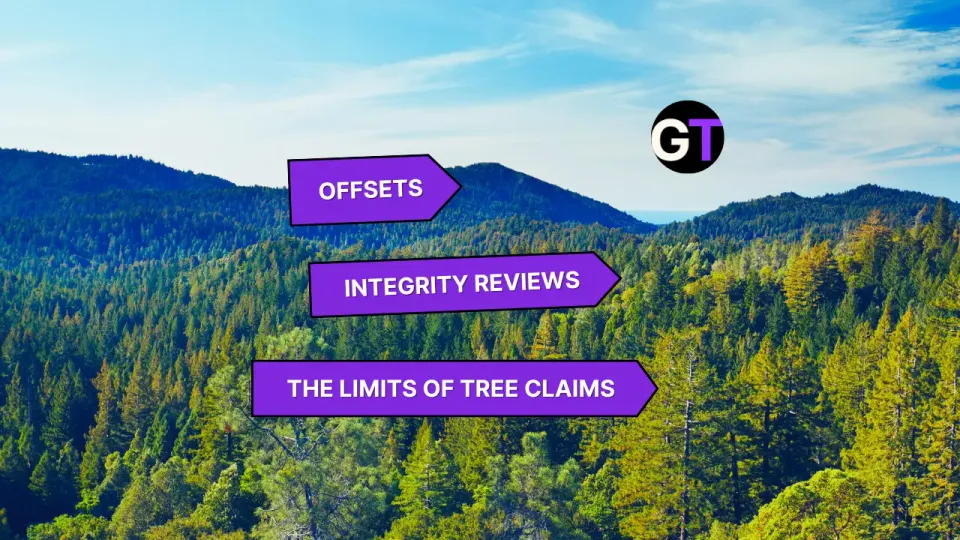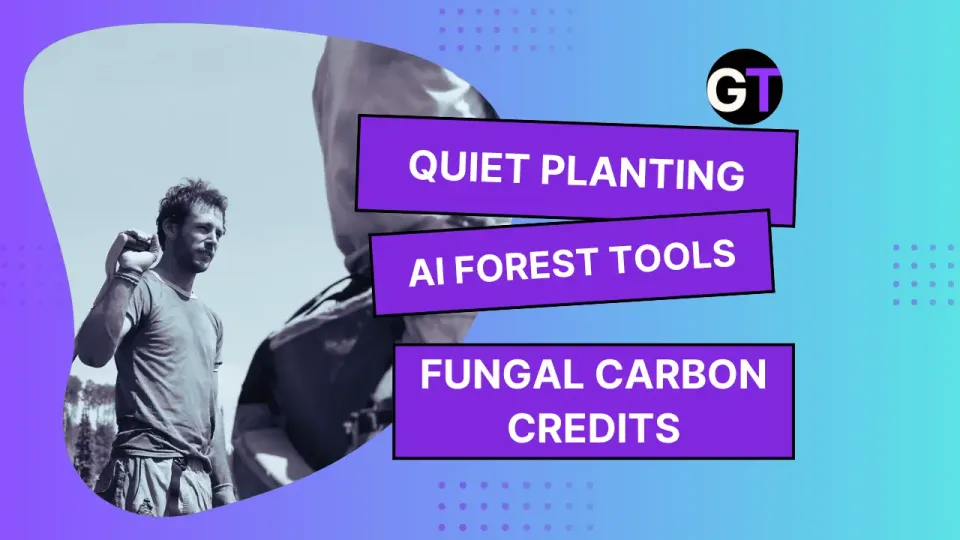Ground Truth Weekly Forest News January 10
Women-led restoration, mapping Canada 2 billion trees, forest finance, nature-based solutions, carbon markets and more... 🌲️🌲️🌳️🌳️🌴️

Women-Led Farms Restore Landscapes in Mauritania
In Mauritania, women like Teslim Mint Soueilim are leading community farms that combine reforestation with income generation. Supported by the Great Green Wall (a "wall" of trees) initiative and the Action Against Desertification program, these farms stabilize sand dunes and grow native species like desert dates and gum arabic trees to protect villages and boost livelihoods.
By integrating training and revenue-generating activities, such as chicken farming and fruit cultivation, the initiative aims to empower communities to sustain their land and future. But challenges persist in doing this in a country where only 0.5% of the land is arable.
Can initiatives like this balance environmental restoration and economic resilience effectively?
👉👉 Read more from the FAO about not deserting deserts
FAO landscape restoration program.
Mapping Canada’s 2BT Program: Transparency and Opportunities
Canada’s Two Billion Trees (2BT) program sets a global benchmark for transparency in taxpayer-funded reforestation, sharing detailed financial data. However, gaps remain in public-facing information on the program, such as tree species, planting locations, and survival rates.
It is our position that greater transparency, like detailed maps and stakeholder engagement, could unlock insights, improve accountability, and strengthen rural and First Nations participation in tree planting efforts. In this article we dive into what the data tells us about the recipients of this program.
How can increased transparency enhance public trust and innovation in large-scale reforestation projects liek this oen and others?
👉👉 Read our coverage on Ground Truth

Close-to-Nature Tropical Plantations Offer Economic and Ecological Gains in Central America: Study
A study on close-to-nature (CTN) forestry in Central America shows CTN-managed tropical plantations can boost carbon storage, biodiversity, and economic viability. Practices like selective harvesting and mixed-species planting outperform monocultures but depend on higher carbon prices or biodiversity payments to compete financially. By aligning carbon and biodiversity markets, the authors believe that CTN management could transform plantation forestry for climate and ecosystem benefits.
Do you think aligning carbon and biodiversity incentives could reshape forestry management practices globally?
👉👉 Read the study in Oxford Academic (paywalled)
eDNA: A New Tool for Biodiversity in Forest Carbon Markets
A new study suggests environmental DNA (eDNA) could enhance biodiversity monitoring in forest carbon (FC) markets by providing scalable, auditable data. Current FC projects often lack robust biodiversity verification, but eDNA offers a solution by detecting genetic material from diverse organisms in the environment.
While challenges like limited tropical genetic libraries remain, integrating eDNA could transform biodiversity certification, making nature-based climate solutions more transparent and credible. This is what we love to hear!
Could tools like eDNA be the breakthrough needed for reliable biodiversity tracking in carbon markets?
👉👉 Read the study in Nature
This Week in Forest Finance: Global Projects Drive Restoration
In our weekly rundown of major forest finance, we learn that major funding boosts restoration efforts worldwide, including $8M for Indigenous forestry projects in the U.S., $3.2M for reforestation in Western Australia, $1.9B for wildfire recovery in New Mexico, and $500K for restoring Congo’s Miombo woodlands.
Can global restoration funding effectively balance environmental and community priorities?
👉👉 Read our coverage on Ground Truth
Advanced LiDAR and AI Enhance Tree Species Classification
A study combining ground-based LiDAR data with deep learning models like PointNet++ and PointConv achieved over 90% accuracy in tree species classification.
They also developed a new method to process the data, keeping detailed 3D information about the trees. This improved accuracy and showed how important it is to focus on small details for better forest management.
How could tools like LiDAR and AI transform traditional forestry and conservation practices?
👉👉 Read the story in MDPI
Boreal Forests Transitioning to an Open State: PNAS
A study projects boreal forests will shift toward an "open state" with 30-50% tree cover due to climate warming, altering fire regimes and carbon storage. Why is this happening? Dense southern forests may thin, while sparse northern boreal areas densify, redistributing carbon and biodiversity. Despite potential net carbon gains, permafrost thaw and increased fire risks could reduce long-term climate benefits.
Can proactive management mitigate the challenges of boreal forest transitions under climate change?
👉👉 Read more in PNAS

Fuel Aridity Identified as Key Driver of Severe Canadian Wildfires
A study published in Science reveals fuel aridity, or vegetation dryness, as the dominant factor behind the severity of Canadian wildfires of recent years. Using 40 years of wildfire data, researchers found drier conditions, driven by climate change, significantly intensify fires, especially during summer.
The study underscores the need for region-specific wildfire management strategies and sustainable forest practices to address growing fire risks and their contribution to global warming. We of course, have some ideas of our own about what that entails. You can read Chris' thoughts here.
Can more openly available data effectively mitigate wildfire risks in a warming world?
👉👉 Read more on Earth.com
Bridging Gaps in Private Finance for Forest Restoration: Nature
A study highlights the potential of private finance to scale forest restoration but identifies barriers like perceived risks and low returns. Corporations often invest to meet emission targets or improve supply chains, while asset managers prioritize low-risk projects with clear financial gains. Overcoming these challenges requires expanded markets, better quantification systems for restoration benefits, and strong public policy support.
What role should public policy play in encouraging private investment in ecological restoration?
👉👉 Read the study in Nature
Edited by Chris Harris

This work is licensed under a
Creative Commons Attribution 4.0 International License.




